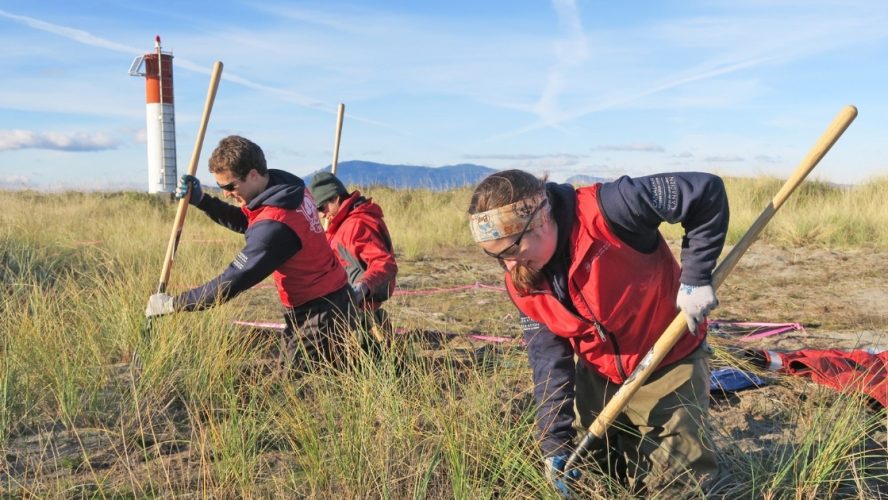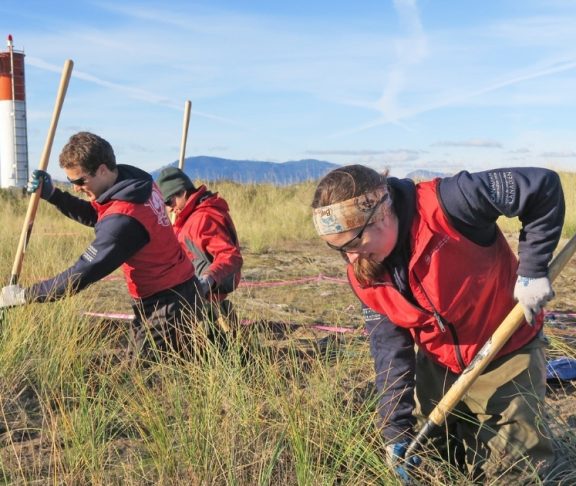
David DeRocco
Sr. Manager, Marketing & Events
The Canadian Wildlife Federation’s programs engage young Canadians in conservation.
With roots planted deeply in conservation education programming, the Canadian Wildlife Federation (CWF) has always been a national leader in youth engagement. The mission at the CWF continues to be connecting Canadians to nature throughout every stage and age of their lives, and education remains a primary pillar of that mission.
That commitment to education was reinforced in 2018 when the CWF launched the Canadian Conservation Corps (CCC), a three-stage conservation leadership program designed for youth aged 18 to 30 funded by the Government of Canada through the Canada Service Corps initiative. It was followed by the 2020 launch of the CWF WILD Outside (WO) program, an outdoor adventure and service-learning initiative targeting youth aged 15 to 18. Together, these two programs developed and delivered by the CWF represent a huge commitment by the organization to develop the next generation of conservation stewards in Canada.
If your plan is for one year plant rice. If your plan is for ten years plant trees. If your plan is for one hundred years educate children – Confucius
“At the CWF, we take a comprehensive approach to youth engagement,” says Mike Bingley, CWF’s Director of Education. “We believe that all stages of development are important: from nature play with young children, and gardening stewardship programs for elementary schools to service learning and employment programs for teenagers and young adults, we’re committed to helping young people make a difference.”
Through a variety of initiatives delivered in collaboration with CWF partners in conservation and the development of self-directed projects, members of both the CCC and WO programs have been actively involved in conservation activities across Canada. Many of these have been focused on forestry initiatives, including trail building, tree wrapping, reforestation and afforestation initiatives, woodland cleanups, and tree identification seminars. For example, Jessie Lozanski, a CCC participant from Ottawa, spent her placement working on invasive species management projects including Scots pine removal and gypsy moth surveying, along with inventorying forests and leading trail cleanups. Lozanski says that her time gave her a new appreciation for CWF conservation efforts.
“I learned that forestry is the act of a mutually beneficial relationship between people and the woods,” she says. “We gain so many services from forests, lumber being the most obvious, but they also clean our watersheds, filter our air, and house a wide array of biodiversity. Forestry, as careful management, helps the woods thrive and is incredibly important for the future of our forests and humanity as well.”
The impact of the CCC and WO programs is being felt in Canada from coast to coast. So far, the 337 participants who have joined the CCC have completed more than 225,000 service hours, while over 839 WO participants have completed another 16,293 hours in their home communities. The projects developed and delivered by these young conservation stewards have focused on a variety of different conservation initiatives, from installing pollinator gardens, turtle nest protectors, and bat houses aiding species recovery to organizing shoreline cleanups, developing classroom curriculum, and spearheading programs designed to reduce plastic pollution in the ocean.
“Programs like the CCC and WO keep us at the vanguard of conservation education in Canada,” says Bingley, who notes that the CWF has reached over half a million people through its education programming over the past five years. “It’s vital to inspire young Canadians to care about nature, about wildlife, and, most importantly, about conservation. Education is the key to making that happen.”
For more information, visit CanadianConservationCorps.ca or WILDOutside.ca.



